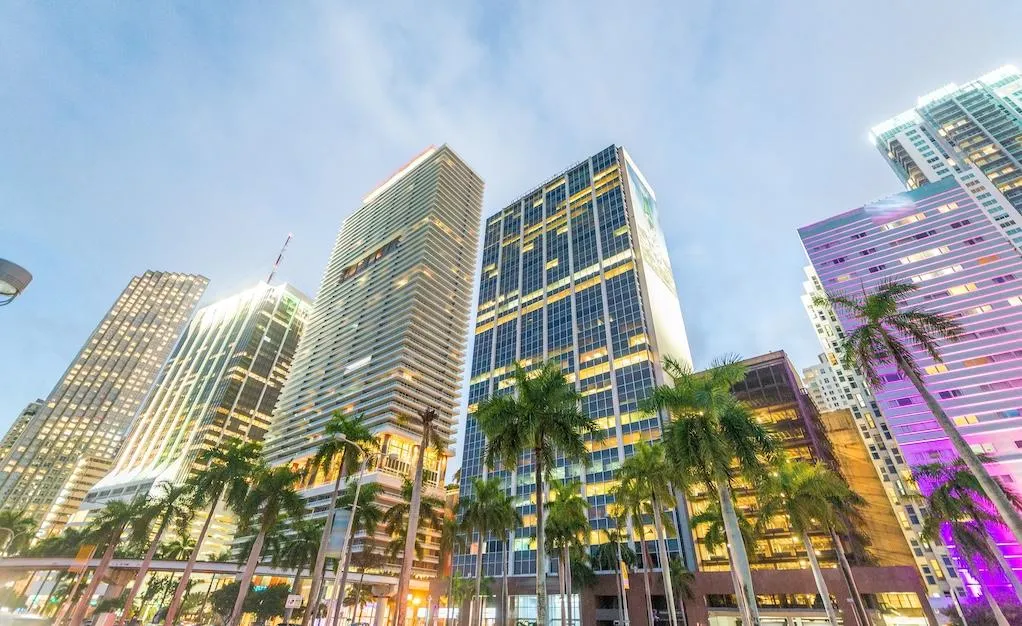
NYC Loses Billions to Florida: Migration to Quality Continues
New York City has always been a center of gravity for talent, capital, and corporate ambition. But between 2017 and 2022, that gravitational pull weakened—substantially.
Over just five years, nearly 30,000 New Yorkers relocated to Palm Beach and Miami-Dade counties, carrying with them $9.2 billion in annual income, according to the Citizen Budget Commission (CBC).
This is not just a passing trend. It should be a wake-up call for executives overseeing corporate footprints, workforce hubs, and long-term real estate strategy.
And New York isn’t the only one bleeding talent and dollars.
This migration reflects a broader realignment of economic influence, with implications rippling through office demand, industrial warehousing, labor accessibility, and many more fundamentals that underpin long-term portfolio value.
If your CRE strategy still orbits the old power centers, it’s time to redraw the map.
Read on. In this article, you’ll learn why:
Migration is the new market signal: $9.2B in annual income left NYC for Florida—led by high-earning millennials and corporate decision-makers, not retirees.
The old hubs are bleeding; the new ones are building Florida and Texas are capturing the talent, the capital, and the corporate leases.
Office is splitting in two: Trophy assets thrive; everything else is in triage or foreclosure—especially in legacy markets like New York and Chicago.
Industrial demand is surging where people are going: DFW, Phoenix, and Central Florida are becoming the backbone of U.S. logistics and light manufacturing.
Behind the Numbers: Who Left and Why it Matters
This is not your typical suburban flight to Florida. The migration wasn’t dominated by retirees.
The CBC report reveals that the biggest exits came from white-collar, high-income earners and millennials in the top 40% of income brackets, many of whom hold decision-making power or are in prime workforce cohorts.

So, let’s look a bit more at the numbers of the demographic core of this migration:
Between 2017–2022, over 125,000 New Yorkers moved to Florida, draining the city of $13.8 billion in adjusted gross income.
Palm Beach and Miami-Dade counties were top destinations, capturing the lion’s share of NYC’s outbound wealth.
In 2023 alone, 1,800+ millionaires officially changed their residency to another state—still high despite being down from the pandemic peak of 3,300+ in 2020.
Millennials were the most workforce-dominant generation also led the relocation trend.
NY lost 4,251 wealthy millennial households (ages 26–45 earning $200K+).
Meanwhile, Florida gained 6,188 and Texas gained 5,151 such households, reinforcing the shift in economic gravity toward low-tax states.
Florida’s population grew by 365,205 in 2023 alone—second only to Texas.
The New York metro lost nearly 500,000 residents between 2020 and 2022. While some of that has rebounded—it’s crucial to contextualize what’s not coming back: the long-term tax base and corporate-facing consumer demand that fuel everything from luxury retail to infrastructure funding.
This is nothing new to write about. It is part of a multi-year trend of domestic out-migration from high-cost, high-tax coastal markets to states like Florida, Texas, Tennessee, and the Carolinas.
And as these states continue to absorb people—they’re also absorbing corporate investment, logistics hubs, and financial decision-making centers.

Office: Repricing, Reconditioning, and Strategic Surrender
Yes, office is still the headline—but the narrative has splintered. Some buildings are thriving. Many are bleeding. And a growing number are being quietly surrendered to lenders.
Manhattan’s office vacancy rate hovered at 22.1% in Q1 2025, but that’s just the average—Class B/C properties in Midtown South and the Financial District are pushing 30%+ vacancy.
Landlords are still trying to stay desirable by ramping up concessions, specifically TI packages exceeding $150/SF in many Midtown deals and up to 12 months of free rent becoming standard for multi-floor tenants. But even with giveaways, demand is shrinking: the average lease size in Manhattan has declined 18% since 2019, as tenants rationalize space and adopt hybrid-first models.
And the flight to quality represents a market correction. 75% of all leasing activity in 2024 occurred in Class A and trophy properties. Overwhelmingly, tenants are consolidating into fewer, better buildings with premium amenities, ESG certifications, and experiential design. These buildings are retaining pricing power, while everything else is in triage.
33% of office CMBS nationwide is now considered distressed, with Chicago topping the list at 75% distress on office-backed loans.
In 2024 alone, lenders took control of over 15 million SF of office space nationally, as borrowers opted for strategic default over refinancing at higher rates.
Southern Gains
By contrast. sustained corporate migration has fueled Miami’s office market. In Brickell and Downtown, Class A rents surged 9.6% year-over-year. Vacancy in top-tier buildings remains below 14%.
In Palm Beach and West Palm, hedge funds, private equity firms, and family offices have established a permanent footprint. Since 2022, this wave of ultra-high-net-worth tenants has driven a 40% increase in average Class A lease size.

Texas tells a different, but equally compelling story.
In Austin, the market remains deeply bifurcated. While Class A product in the urban core holds its ground, legacy buildings are suffering. Vacancy has climbed to 19.2%, with a flood of sublease space dragging down absorption. Yet the city’s fundamentals—talent, affordability, tech concentration—remain solid, keeping demand alive for well-located premium assets.
Meanwhile, Dallas-Fort Worth continues to flex its muscle as a corporate hub. With recent expansions and relocations from Goldman Sachs, Wells Fargo, and Charles Schwab, Class A assets in the Uptown and Legacy submarkets are holding occupancy above 85%. But not all parts of DFW are winning—older suburban campuses, especially those without meaningful renovations or amenity upgrades, are lagging far behind.
Industrial Real Estate Follows Migration
As population centers shift, so does the geography of logistics, advanced manufacturing, and e-commerce fulfillment. The Sun Belt isn’t just siphoning off talent—it’s rapidly emerging as America’s new industrial core.
Warehouse demand is surging in the migration corridors:
Dallas–Fort Worth led the nation with over 31.6 million square feet of net industrial absorption in 2023, driven by its location at the crossroads of national freight routes and access to a growing, affordable workforce.
Phoenix added over 26 million square feet of new industrial space in 2023, a 14% increase from the year prior, with vacancy remaining tight despite aggressive deliveries.
Central Florida—Orlando, Lakeland, Tampa—has seen over 20 million square feet of new construction since 2022, with Lakeland's central positioning between Tampa and Orlando making it a magnet for last-mile distribution.
And it’s not just consumer driven. As companies flee high-cost regions, we’re seeing relocations of light manufacturing and R&D operations, where industrial-zoned land is cheaper and energy availability (including for EV fleet conversion) is more favorable.
What Migration Means for Portfolios Now
For real estate and finance leaders managing national portfolios, the message is clear: Migration is your market signal. What looked like pandemic disruption is now baked into the economic operating system.
Follow the talent—not tradition. Workforce migration isn’t temporary. Plan office hubs where employees already live—not where they used to.
Re-balance your risk. If your portfolio is overweight in high-tax metros, now is the time to re-evaluate lease renewals, sell underutilized assets, and negotiate flexible terms in distressed markets.
Use distress to your advantage. In legacy markets like New York, landlords are desperate. Now’s the time to renegotiate, terminate, or right-size your leases with strategic leverage.
Diversify into high-growth regions. Industrial, flex, and mixed-use sites in Florida, Texas, Georgia, and the Carolinas are rising in value as population and business investment shift.
If your commercial real estate portfolio is still built around 2015 logic, you’re already behind. This isn’t a market correction. It’s a migration-driven realignment of where business happens, where people live, and where growth will compound over the next decade.
The $9.2 billion that left New York didn’t just reduce the city’s tax base. It reshaped the national map for corporate investment. Companies that move fast will gain pricing power, talent access, and operational efficiency. Those that hesitate will pay premium prices in shrinking markets.



